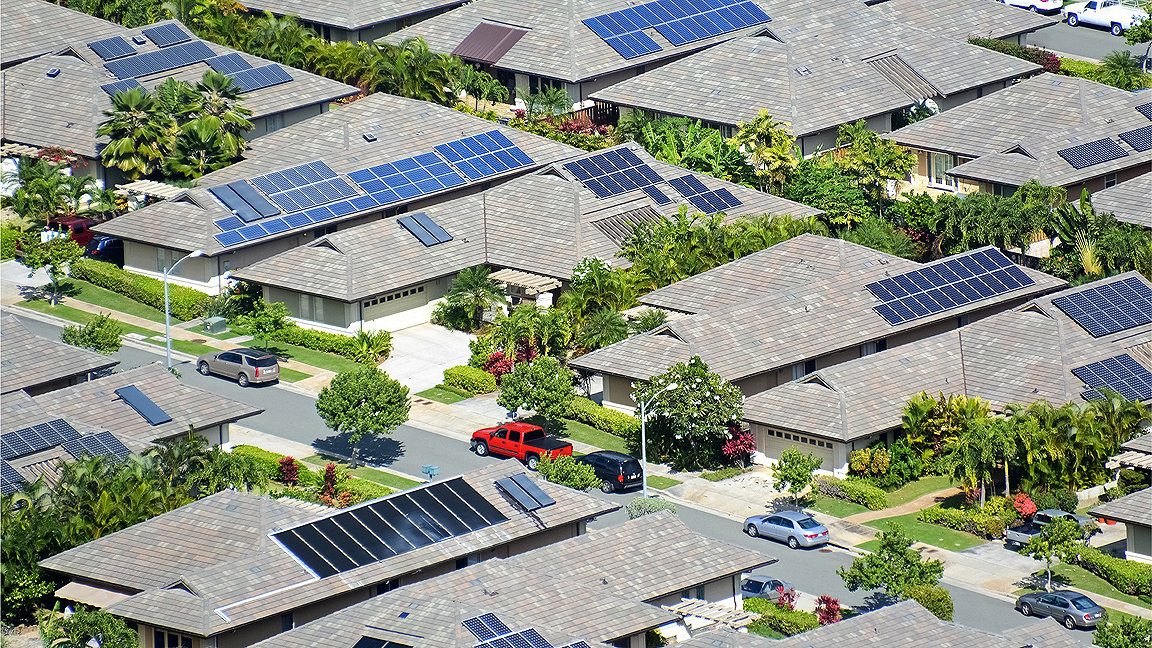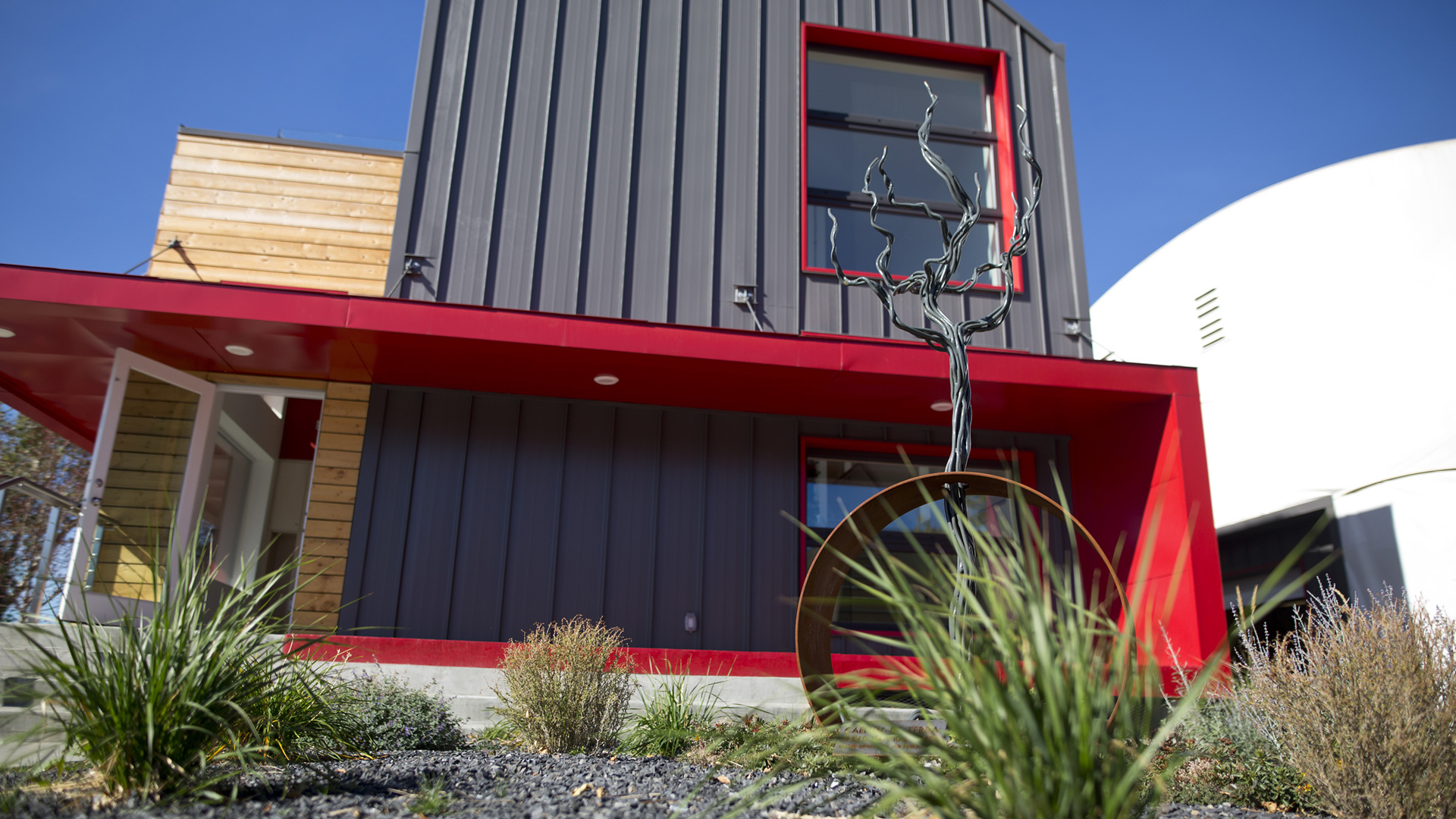
Melanie Ross heads up the Green Building Technologies (GBT) research group, one of six research areas under the Southern Alberta Institute of Technology’s (SAIT) Applied Research and Innovation Services (ARIS) division.
It works in partnership with industry, municipalities and other institutions that have ideas or specific products for which they’re seeking to solve problems through research and third-party validation.
Ross’s team works in an 850m2 ‘living laboratory’, the GBT Lab and Demonstration Centre on the SAIT campus, which opened in 2017 as the first net-zero commercial building in Calgary. The choice of location is especially interesting because Calgary is known as the oil capital of Canada. The main lab is complemented by other labs that are connected and all focused on green building processes, strategies, technologies, materials, and innovations as they relate to the built environment.
The architect-turned green technology researcher says there are lots of difficult conversations to be had on the journey to reducing carbon emissions in the built environment. Modus got the chance to have its own conversation with Ross and find out about the kind of research her team is doing.
What type of research do you do in GBT Lab and Demonstration Centre?
We have a large tent attached to the main building and within that is a workshop and large-scale equipment for doing structural and other types of testing and building. The workshop is a traditional carpentry workshop where we're working with all sorts of materials — breaking things apart and putting them back together, testing and providing feedback to companies on their path to creating sustainable and efficient products.
Alongside the tent and workshop we have a rebuilt trailer to use as our ‘resource library’. When we talk about resources, for example, we have full-scale wall sections cut away and on a track. You can roll them out like books on a shelf to view assemblies and monitor performance.
At the back of our site, we have our solar lab, which researches renewable technologies such as photovoltaics, thermal, battery storage and electric vehicles (EVs).
Within the building, it’s like a playground for innovators to come in and try things. We work with a wide range of people and industries who will have ideas that they want to test out or specific products that they want to evaluate in-situ. The whole basement of the building is a mechanical systems lab with the capabilities to plug in all sorts of different kinds of equipment, test them independently or integrate them with other types of equipment to see how things work together.
We have more than 600 sensors in the building that are everywhere, monitoring everything from energy and water use to thermal comfort, humidity, occupant movement, and so on. We have 3 million points of data coming in on a regular basis to continuously monitor and evaluate all the different systems and building elements.
There’s a solar carport out front that tilts according to the angle of the sun. It's powering some EV charging stations underneath and is also connected to the campus grid. We have a water lab – a large system collecting rainwater from the building and through rain gardens. We also have light and dark grey water tanks and an indoor biofiltration pond to test different elements of water filtration and water reuse.
What is unique about the research you work on?
We're always looking at working on what no one else is really working on yet. With the innovators, with the kind of things that need to have that development happen in industry before it can get to a point where we have that larger uptake in market.
Once we have a larger uptake of concepts and materials, then we step back, and we move on to the next innovative project, allowing industry to take over and adopt the innovations into mainstream building practices.
“We're looking at ways to generate more energy than we consume”

Can you share an example?
We built the first LEED Platinum home in Alberta (the second one in Canada) with builder partners who were interested in pushing ahead on concepts like, ‘What does green building really look like?’ And we did a few others after that to compare them and demonstrate how to achieve them.
Then we started to move into the net zero concept before net zero was even a conversation in our region. Now we're looking at zero carbon, and also not just net zero energy but net positive energy. We're looking at ways to generate more energy than we consume and reducing carbon emissions further with new technologies that are still in development but will be the future of the industry.
What are some of the cutting-edge things that need to be researched?
One of our focus areas right now is on embodied carbon. This is the concept that all building products are embedded with a carbon footprint, from material extraction to production to transportation to the building site and then as waste once a building is demolished. The greenhouse gas (GHG) emissions associated with each step in the process also contribute to our overall GHG emissions profile of energy and water utility use while a building is operational.
We also conduct a lot of research on cold climate applications. We're working on some renewable building solutions for the Arctic and extreme cold conditions that balance the increasingly wild temperature swings and climate events from season to season.
In Alberta, we produce a lot of agricultural by-products so we're looking at how we use things like fibres from leftover hemp hurd and stalks. They're very strong and they're fantastic when mixed with an additive to create an unlimited number of new products more sustainably. How do we create more innovation in those spaces so we're using what's readily available instead of relying on the larger global supply chain?
This ties into the circular economy conversation around being able to build a property, and then being able to effectively deconstruct and reuse materials for another building, rather than just knocking it down and sending it to landfill. In Canada, construction waste accounts for about 40% of all waste. That includes waste while building, as well as demolition waste. We have to be more conscientious about that and push for a larger conversation globally on how we streamline our current practices and reduce GHG emissions from production and waste.
Finally, we continuously share education and content from our research to help the construction industry develop and adopt more sustainable building practices.
“In Canada, construction waste accounts for about 40% of all waste. That includes waste while building, as well as demolition waste”
Melanie Ross is the research and business administration manager at Southern Alberta’s Institute of Technology. Her projects have focused on LEED, WELL and other certifications, along with energy management, sustainability planning and policy development. She advocates for a green future, “one building at a time.”


%20Peter%20Judson.png)